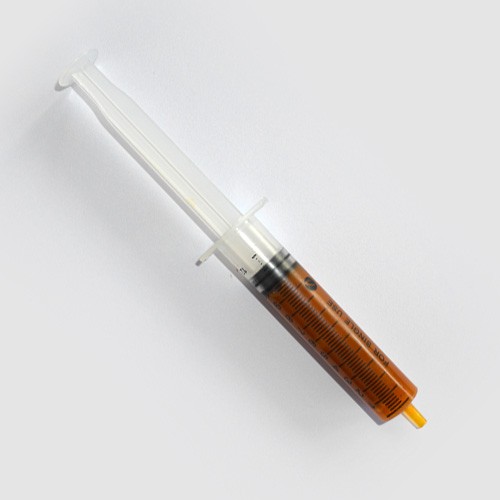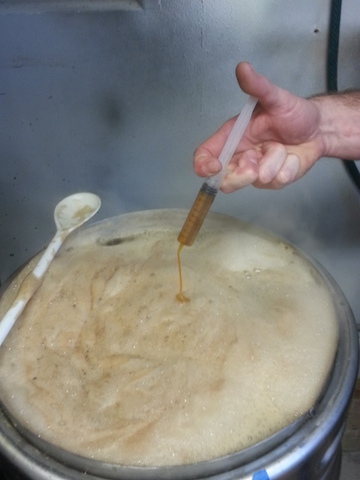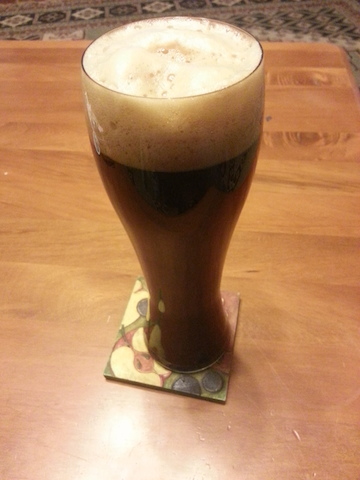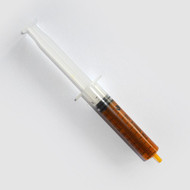 As you will have discovered by now, the essential oils from hops impart much of the flavor in beer. Over recent years hop pellets have largely replaced the use of hop cones, having better storage properties and improved α-acid utilization.
As you will have discovered by now, the essential oils from hops impart much of the flavor in beer. Over recent years hop pellets have largely replaced the use of hop cones, having better storage properties and improved α-acid utilization.
At the extreme processed end of hop products lie the hop extracts which have undergone a number of developments over the years, most recently CO2 hop extract has been developed which has solved a number problems caused by the solvents used to create other extracts.
What is hop extract?
CO2 Hop extract is all the good parts of the hop removed from the plant matter – the α-acids and essential oils such as farnesene and myrcene are stripped by the carbon dioxide leaving behind the plant matter which is essentially ‘filler’.
If you have ever chewed on a hop flower we shouldn’t have to explain why you shouldn’t eat hop resin – if you have to try it for yourself though, your taste buds should return to normal after about 8 hours.
It is manufactured by ‘super-critical CO2 extraction’ this is a process whereby carbon dioxide which has been compressed until it becomes a liquid, is passed through hop flowers in a pressure vessel. As the liquid carbon dioxide percolates through the material it acts as a solvent dissolving the hop resins.
Once the carbon dioxide leaves the pressure vessel it will evaporate leaving the yellow hop resins behind. As carbon dioxide is inert and evaporates completely at room temperature, this process doesn’t require heat damaging the hop compounds or leave any residual contaminant.
After the carbon dioxide has evaporated what is left is a thick, sticky, honey colored resinous substance.
But is it any good?
CO2 Hop extract has some advantages over regular plant based hops containing plant matter; the first and most obvious is reduced kettle losses from hop trub at the end of the boil, and that means more beer for your hard work.
Tannins and other plant polyphenols present in the vegetable matter aren’t introduced to the kettle, these play a role in the formation of chill haze and produce an astringent dry-mouth-feel at high concentrations.
Although hops will typically contribute only 20-30% of the polyphenols in a ‘typical’ beer this is especially advantageous when creating big hop-driven beers with high IBU’s.
CO2 hop extract has better storage properties than hop-pellets, in a manufacturers investigation a 10% reduction in α-acid levels was found after five years when stored between +/- 20°C.
CO2 hop extract will not replace the use of cones, plugs and pellets – it cannot be placed in a hop-back, which aside from imparting flavor also acts to filter the fresh wort.
As mentioned before polyphenols contribute to chill-haze, they do this by dropping protein out of solution (also known as precipitation). In the case of a hop-back some of the protein in the wort passing through the plant matter will precipitate, which will clarify the wort and help prevent problems further down the line.
Using Hop extract.
 The simplest application for hop extract is replacing an early kettle addition to achieve the correct bittering. Conversion or utilization of the α-acids is identical to using cones or plugs, so substituting an addition is largely a matter of adding the same amount of alpha acid units (AAU) to the boil.
The simplest application for hop extract is replacing an early kettle addition to achieve the correct bittering. Conversion or utilization of the α-acids is identical to using cones or plugs, so substituting an addition is largely a matter of adding the same amount of alpha acid units (AAU) to the boil.
To calculate the AAU of an addition refer to our article here.
To calculate the volume of hop extract required for an addition use the following formula:
Volume of extract (mL) = AAU (g) x Density of hop extract (g/mL)
The density of hop extract is approximately 1.05 g/mL at 60°C, this is the temperature at which it becomes runny enough to easily dispense from the syringe.
e.g. To replace a 2.8 AAU addition with hop extract requires:
2.8 x 1.05 = 2.94 mL
This same method applies to other additions up to and including flame out.
During the boil the essential oils added to the kettle being volatile will evaporate, which is why we have to dry-hop in order to have these flavors in our finished beer.
Substituting a dry hop addition with hop-extract is a little more complicated as the AAU is a measure of the quantity of α acids in an addition not the essential oils.
The relative proportions of essential oils to α-acid will be similar in the extract to the vegetable matter so calculating the AAU of a dry hop will be a good starting point to estimate the quantity required.
However not all the essential oils in a dry-hop become dissolved in the beer, so when replacing with a hop extract you will want to use less than the amount indicated using the AAU substitution.
The extract will need to be dissolved in a high proof spirit before adding to your fermenter, otherwise it quickly form a waxy solid with the wort and will not mix to any great extent.
Out of the fridge hop extract will be a solid honey colored resin, which will soften as it approaches room temperature, the easiest method to dispense from the syringe is to stand in a cup of boiling water for five minutes to soften.
Care needs to be taken to prevent the resin from scorching on the bottom of the kettle during addition (where it will not be utilized) so mix well while adding to your boil. Afterwards any residue can be cleaned with methylated spirits or flushed with large amounts of very hot water.
Below is a Coffee-Oatmeal Stout recipe, which uses a single hop extract addition at the start of the boil for bittering:
Coffee Oatmeal Stout recipe
Silky smooth and slightly nutty from the oats, this Stout will love your mouth with a full malt body and sweet vanillins lingering from the cold brewed coffee (with inspiration from the Mad Fermentationist).
1.061 OG - 1.020 FG - 39 IBU - 5.3% ABV

In the Mash:
3.3 kg Pale malt.
1 kg Rolled Oats (lightly toasted).
450 g Roasted Barley.
340 g Dark Chocolate malt.
230 g Weyermann CaraMunich II malt.
180 g Caramel/Crystal malt - 180 EBC (90L)
Toasting the rolled Oats.
Spread the rolled oats in a thin layer over the surface of an oven tray. Place in a pre-heated oven set to 150°C. After around 15 minutes you will notice the oats start to turn a golden brown color, flip these and toast for another 10 to 15 minutes to finish them off. Pay close attention though, once the browning reaction starts it can quickly get away from you.
Add these ingredients to your Mash-tun or grain bag and mash at 68°C for 60 minutes or until conversion is complete.
In the boil:
5 mL of Pacfic Jade hop-extract, 3.6 AAU, 60 minutes, 39 IBU.
Stir well while adding to make prevent it scorching on the bottom of the kettle.
In the fermenter:
Cool and oxygenate your wort, once in the fermenter any ale yeast will do. We used WLP002 English Ale yeast. A 20 L batch with an OG of 1060 will require a 2 L starter culture, or two packets of dried yeast.
Once a stable final gravity (around 1020) is reached rack onto 60 g of coarsely crushed coffee beans for two days before bottling or kegging.
Why we do, while we brew.
Using CO2 Hop extract is convenient and can solve a lot of the issues associated with using large amounts of hops without creating any new ones. For the home brewer reducing the kettle trub means more beer, and reducing chill haze is always a plus.
